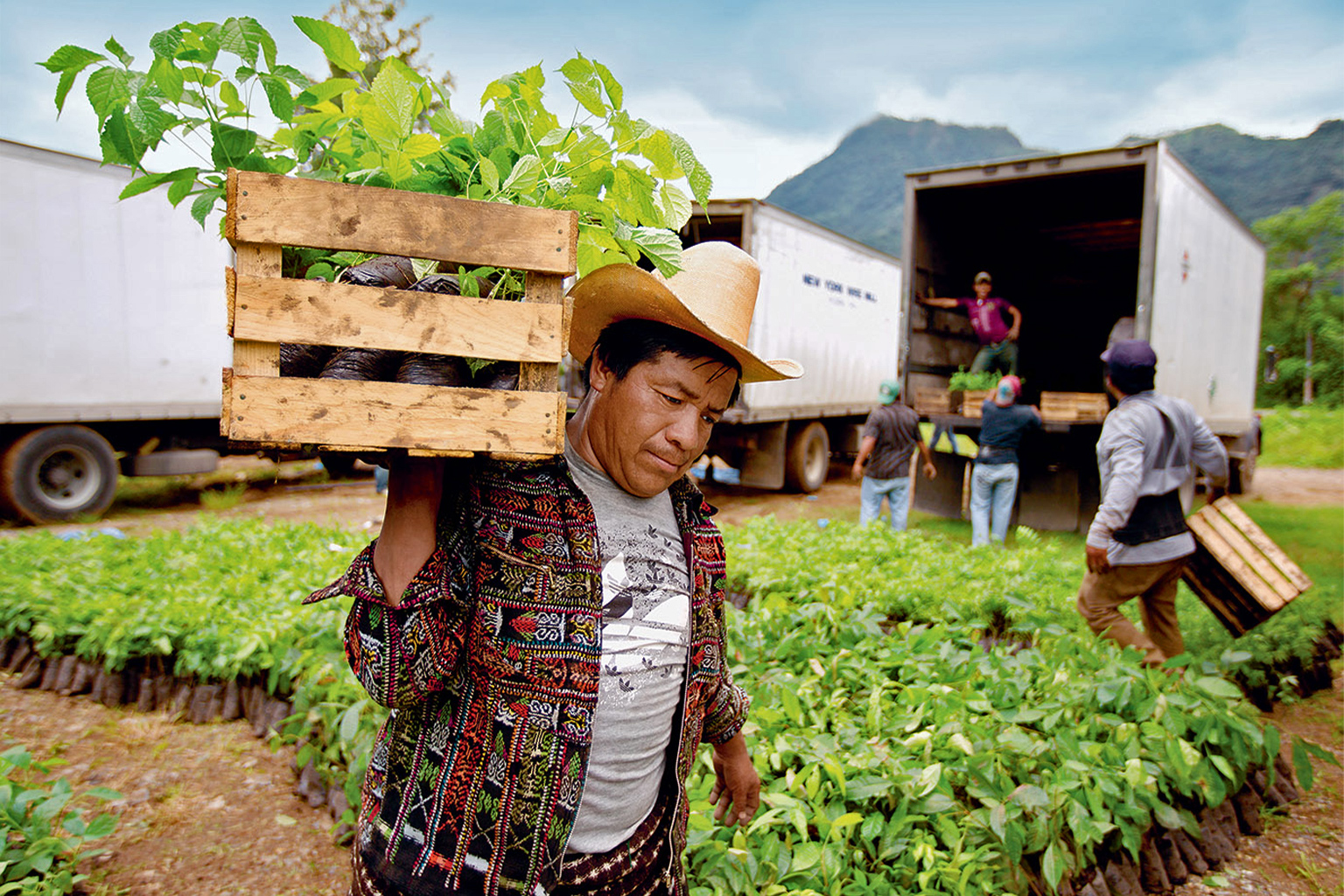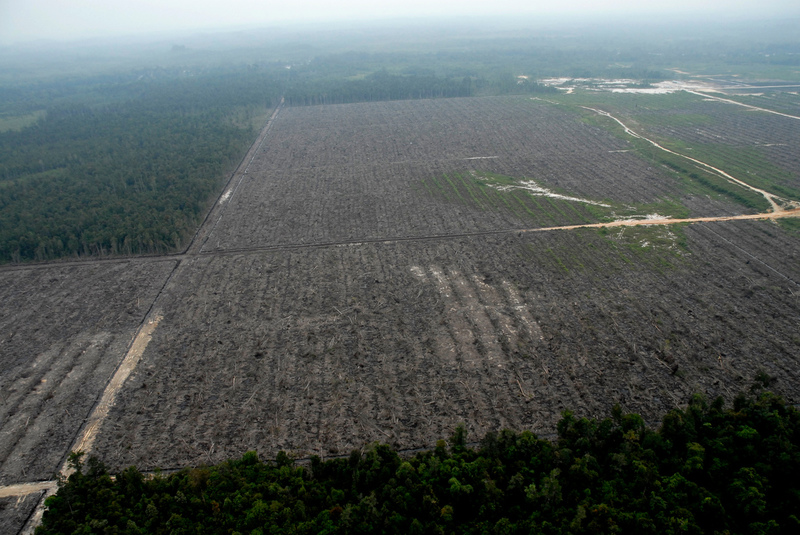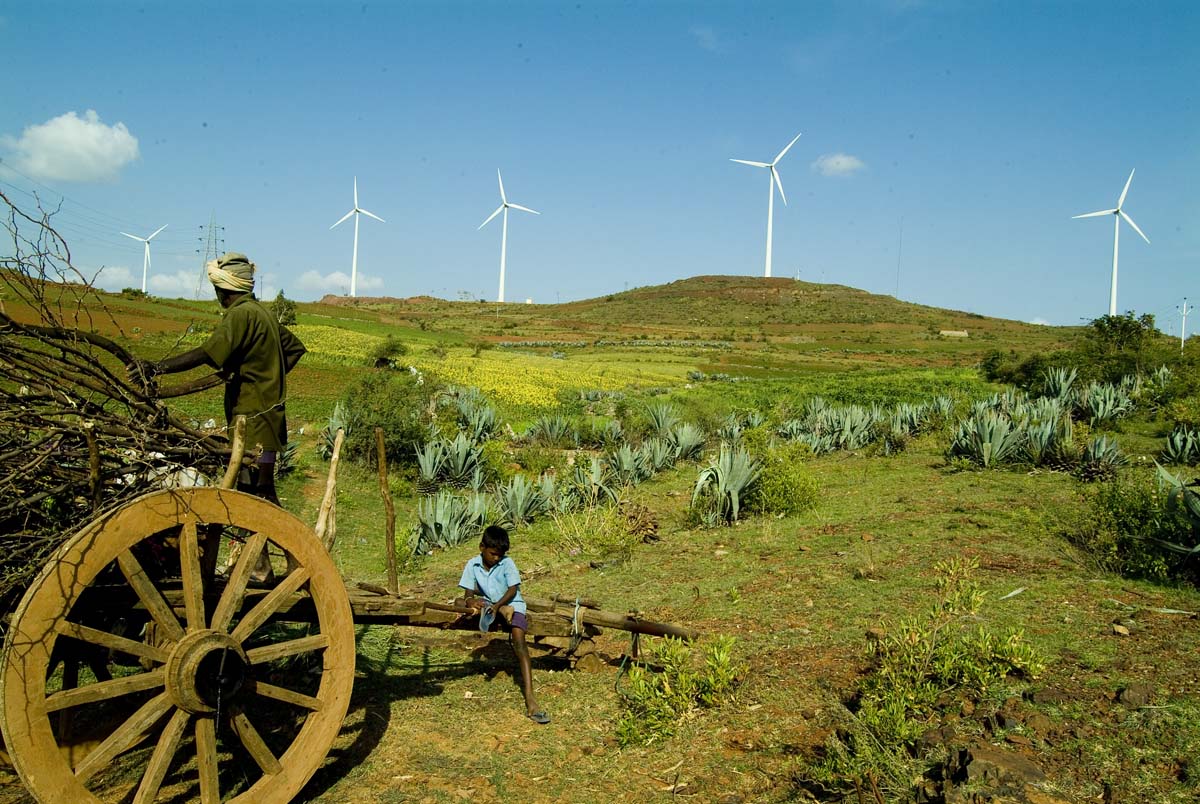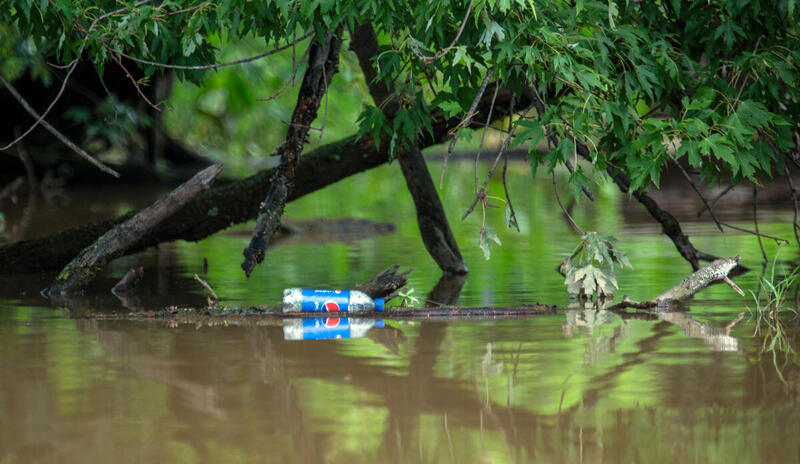- A tool that wields the techniques of carbon offsets is surging among companies claiming that it reduces their carbon footprints. The tool, known by some as “insetting,” had simmered for more than a decade on the fringes of climate action among brands that rely on agriculture, but is now expanding to other sectors.
- Insetting is defined as company projects to reduce or remove emissions within their own internal supply chains. Proponents say it is valuable for agriculture-based firms struggling to address indirect emissions from land that has already been deforested. Like offsets, insetting can bring social and economic benefits to communities.
- Some oppose the tool outright, saying it is subject to the same problems as offsets (including lack of permanence and enforceable standards), but can also be worse as it can lead to double-counting climate benefits and can have weaker oversight.
- Having now become popular with major corporations such as Nestlé and PepsiCo, insetting as a climate tool is poised to see increased scrutiny as companies and researchers figure out its place in corporate action and reckon with the urgency to reduce emissions from agriculture.
Carbon offsetting has a controversial 25-year history, with companies like Microsoft and Apple pledging their plans to go carbon neutral, or negative, by allowing aspects of their operations to continue emitting at a certain level, while removing as much, or more, carbon from the air via reforestation or other projects elsewhere in the world.
Now an up-and-coming twist on offsetting is surging as consumer brands that rely on agriculture seek ways to curb emissions. Dubbed “carbon insetting,” it simmered on the backburner of climate action for more than a decade.
The practice, though still only loosely defined, covers efforts by companies to reduce or remove emissions within their own internal supply chains (whereas firms that use offsetting typically pay others outside their industry to sequester carbon for them).
Firms that are now using insetting, like Nestlé and PepsiCo, say the approach gives them better control to shrink their carbon pollution, makes them more responsible and accountable and reduces their carbon footprints. Independent researchers aren’t so sure, with questions raised similar to those surrounding carbon offsetting as to whether the process lacks independent oversight, uniform high standards and scientific rigor. Some say insetting may even be weaker than traditional offsets.
A climate solution whose time has come?
Insetting can take many forms, and industry is still defining the rules to determine legitimate projects. A common insetting project looks like this: A coffee brand funds tree planting amid crops it purchases from growers in tropical regions. That firm then calculates the climate benefits of those trees and subtracts them from the firm’s overall corporate carbon footprint.
Insetting, like offsetting, relies on land preservation, reforestation and forest conservation, regenerative agriculture and other sustainable practices to store carbon.
The rush to embrace insetting comes as major institutions that help steer corporate climate action, such as the Greenhouse Gas Protocol (GHGP) and the Science Based Targets initiative (SBTi), lend legitimacy to the practice by including it in an official climate guidance. PUR, a consultancy that calls itself a “pioneer of insetting since 2008” and which helps companies implement nature-based solutions for climate mitigation, proclaimed 2022 the “year of insetting.”
“The floodgates really opened,” says Andrew Nobrega, director of innovation and development at PUR. “Insetting becomes a really valuable tool and a fundamental tool for any company that has agricultural emissions as a material part of their supply chain.”

Truly cutting emissions or not?
Independent analysts remain skeptical of the benefits of insetting, with some believing it may be a weaker tool than offsets, which have received criticism for failing to contribute significantly to climate mitigation and for harming communities where projects are launched.
A recent report from the NewClimate Institute and Carbon Market Watch says insetting “amount[s] de facto to the unregulated offsetting of emissions.” Four of the 24 climate commitments that the two think tanks analyzed in their report include a form of insetting, with the reviewers noting that some companies are “lobbying” institutions, such as the GHGP and SBTi to install the practice as a robust climate tool.
Reena Skribbe, climate policy analyst at the NewClimate Institute and an author of the report, says insetting falls victim to similar problems to those that plague offsets but could result in even weaker oversight. Climate action is urgent, but insetting is too similar to a faulty tool, she says.
“It’s just clear that we are so far over the line with climate action for these companies to come up with newer and newer ways to reframe and just put offsetting in a different dress,” Skribbe says.
However, Skribbe does agree that implementing emission-reducing projects within a company’s supply chain is a worthwhile endeavor. In the initiatives she has studied, two problems were evident: proving that claimed emission cuts are permanently removed from the atmosphere, and proving climate benefits aren’t double-counted.
Insetting proponents point to climate benefits: the increased control and efficiency of managing emissions internally within a company’s own supply chain, thus improving ecosystem management at the point where a firm sources agricultural commodities. Like offsetting, insetting projects can bring economic and biodiversity benefits to the communities where they’re located — but only if properly managed.
Analysts across industry and research say the tool is now at a critical juncture to clarify its role in climate action.
“I don’t think that people are using these [insetting] tools to pull one over. But I think what’s happening is that it’s unclear what [these tools precisely] are. It’s unclear how [the companies] wield them. It’s unclear what to do with them,” says Lauren Gifford, a postdoctoral fellow at the University of Arizona who has studied carbon offset policies. “These projects still require the same amount of scrutiny as any other offset project.”

Inside insetting
Companies began proposing insetting projects in the late 2000s, especially among European firms whose businesses relied heavily on agriculture.
Those companies often see the majority of their emissions coming from their suppliers — emissions classified as Scope 3 by the Greenhouse Gas Protocol, which sets corporate standards and guidance for emissions. Scope 3 roughly corresponds to carbon releases caused by supply chain related activities.
As an example, forest cut down to make way for a Brazilian soy plantation can be the largest contributor to a food company’s emissions footprint, and after that forest is cut, there’s no way to recover all that lost carbon storage (save for restoring the forest). Insets have emerged as a technique to negate some of those losses in that farm or plantation’s daily operations.
Regenerative agriculture (also known as agroecology) — a food production system that supports ecosystems by nurturing and restoring soil health to store more CO2 while protecting water resources and biodiversity — is the most common form of insetting project. Some scientists see it as an important, effective and fast way to trap carbon, buying the world time as it tries to kick the fossil fuel habit.
Companies relying on tropical forest crops — such as oil palm and cocoa — have been trumpeting their regenerative agricultural projects as being carbon neutral or environment-friendly businesses for a number of years.

Coffee brand Nespresso is one of the most prominent companies promoting the practice. Working with PUR, it’s set up native tree planting projects in Colombia, Costa Rica, Ethiopia, Guatemala, Indonesia and Uganda. These initiatives utilize agroforestry methods, whereby crops are intermingled with the planted trees, thus storing carbon, encouraging biodiversity and offering shade to workers.
Luxury fashion brand Kering, which claims carbon neutrality, supported planting a couple hundred thousand trees in Guyana’s rainforest destroyed by gold mining. Brazilian meat packing giant JBS — repeatedly cited for its involvement in illegal deforestation and greenwashing activities — has funded projects that support the restoration of degraded pastures with cocoa smallholdings.
Others touting insetting have invested in places where they source commodities, but in ways not directly related to production. L’Oréal, a cosmetics brand, for example, has given low-carbon cookstoves to a community in Burkina Faso where it sources shea butter, helping to avoid the emissions (and health hazards) that come from inefficient traditional cooking methods. Hotel corporation Accor encourages tree planting in places where it sources food and drinks.
Across the palm oil sector, firms are measuring carbon sequestered in projects they’ve created, which resemble insetting projects, but may not always go by that name. For example, the Rimba Collective aims to turn $1 billion of investment from companies like Nestlé, PepsiCo, Unilever and Procter & Gamble into conservation projects that allow the companies to make sustainability claims. L’Oréal’s Fund for Nature Regeneration aims to help smallholders sell carbon credits from sustainable farming.
Having reviewed multiple company disclosures, Skribbe says it’s not clear to what extent firms rely on insetting to meet net-zero targets, or how carbon savings are counted in company portfolios.

Insetting guidance and standards
Until last year, there was little guidance for how to design or use insets. Then in 2022, two major institutions offered long-awaited pathways for reducing and accounting for supply chain emissions to help companies that rely on land for their business to achieve climate commitments.
The SBTi, a partnership formed by the World Resources Institute, World Wildlife Fund, UN Global Compact and CDP (formerly the Carbon Disclosure Project), allows companies in the forestry, land and agriculture sector to use a form of insetting in their net-zero plans.
The GHGP, which the SBTi and many companies look to for reporting private sector emissions, has included insets in its draft guidance under review for the land sector, and final guidance is expected to be published this year.
Input for both guidances comes from NGOs, independent experts and companies that have used insets, including Nestlé and PepsiCo.
Carbon offset registries like Gold Standard and Plan Vivo have also been heavily involved in the development of insetting. Companies like PUR, South Pole and Regrow Ag, which has received millions in investments for inset development, are major players in the offset market and also set up insetting projects.

Offsetting vs. insetting
Offsetting and insetting projects both claim to follow the same scientific methodologies to measure carbon savings.
Like offsets, insets measure a project’s avoided emissions or carbon removals. But that precision depends on rigorous record-keeping, a detailed knowledge of the capacity of biodiversity to store carbon and assumptions based in hypothetical future scenarios.
It’s difficult, for example, to ensure that carbon removals gained by tree planting will be permanent: If in the future the trees are cut or burned in wildfires, the stored carbon returns to the atmosphere. However, by the time that happens, a company could have claimed the trees as neutralized emissions.
Like offsetting, insetting is only “one piece of the puzzle, and should be part of a broader sustainability strategy for companies to address not only climate impacts, but other issues around sustainability, like biodiversity, impacts on water, livelihoods, etc.” says Michael Guindon, executive director of the International Platform for Insetting, which helps companies integrate emission-cutting projects into their businesses.
Other analysts agree carbon counting shouldn’t be the only consideration. The SBTi, for example, limits companies’ use of offsets for achieving climate targets because of their potential to cause other problems “around land use, equity, fairness and climate justice.”
Insetting may even be worse than offsetting for growers, says Skribbe, because the practice is not clearly defined or well supervised. She notes that there is typically less transparency and auditing of projects monitored internally within a company’s supply chain.
Researchers studying insetting suggest palm oil firms that dictate production up the supply chain can wield unjust influence on farmers. Some experts even question whether there’s any real difference between the carbon storing potential of offsetting versus insetting, and whether it may be more a matter of semantics.
“The people at the high level, they’ve seen insetting as a way to avoid the risk [of the controversies surrounding offsets]. And they’re using [insetting] to say these are better, more direct … more responsible … more valid,” says Derric Pennington, senior sustainability scientist at the University of Minnesota. “But they’re not.”

Double-counting, or not?
Then there is the risk that offsetting and insetting both can utilize faulty accounting methods, resulting in the double-counting of stored carbon.
Nespresso, for example, says it uses its projects to “inset our operational carbon footprint.” And a program at PepsiCo uses fees from employee travel to fund regenerative agriculture projects in its supply chain and neutralize travel emissions. DHL Group promotes a “carbon neutral” shipping option that uses premiums to fund alternative shipping fuels that it calculates as avoided emissions.
But these three examples all claim to offset the carbon that would typically be the company’s direct emissions with reductions in its indirect emissions, which would already be counted in Scope 3 emissions. Such overlaps imply that the negative emissions were counted twice, says Skribbe.
“Once they have the emission reductions, which is obviously great and goes to the emission reductions goal, they use them again, basically, to offset emissions elsewhere,” Skribbe explains. Insets should only be used to reduce Scope 3 emissions, according to the GHGP draft guidance.
Nobrega of PUR says he hasn’t heard of any double-counting. DHL tells Mongabay that it has its emissions audited by a third-party company and points to SBTi’s approval of its plans to reduce emissions. Nespresso says its third-party auditors certify every five years the accuracy of insetting projects. PepsiCo did not respond to questions.

The road ahead
Most insetting today remains centered around projects that improve carbon sequestration in soils or forests. The We Mean Business Coalition (WMBC) says research shows that these removals of carbon from the atmosphere are at least a quarter of the reductions needed to achieve net-zero emissions in the land sector. The land sector itself composes almost a quarter of global emissions, which makes it important to designing robust tools for climate action.
“Scrutiny over accounting [monitoring, reporting and verification], and the uncertainties particularly around the science of soil carbon removal are warranted, but we shouldn’t be attacking companies for aligning their strategies with the best climate science available,” says Luke Pritchard, WMBC’s deputy director of nature-based solutions.
Going forward, PUR’s Nobrega suggests the field of insetting will likely be focused on the development of registries and figuring out how to define the scope of insets. Two companies, he points out, shouldn’t be able to claim the same ton of carbon removed from the atmosphere. And can an inset project fund nearby forest conservation or must it be directly tied to production? Rules will need to be made to decide such questions.
“There’s now so many actors that are going to be interested in this; some of the more complex supply chains are going to be engaged in [insetting]. We need to have more rigor about the registries to avoid double-counting,” Nobrega says. “The global carbon industry is something that continues to evolve. There’s always opportunities for growth. There’s always opportunities for learning.”
Citations:
NewClimate Institute, & Carbon Market Watch. (2023). Corporate Climate Responsibility Monitor 2023. Retrieved from https://newclimate.org/sites/default/files/2023-02/NewClimate_CorporateClimateResponsibilityMonitor2023_Feb23.pdf
World Resources Institute, & WBCSD. (2020). Corporate Value Chain (Scope 3) Accounting and Reporting Standard. Retrieved from Greenhouse Gas Protocol website: https://ghgprotocol.org/sites/default/files/standards/Corporate-Value-Chain-Accounting-Reporing-Standard_041613_2.pdf
Costa, C., Wollenberg, E., Benitez, M., Newman, R., Gardner, N., & Bellone, F. (2022). Roadmap for achieving net-zero emissions in global food systems by 2050. doi:10.21203/rs.3.rs-1552029/v1
Wiltshire, S., & Beckage, B. (2022). Soil carbon sequestration through regenerative agriculture in the U.S. state of Vermont. PLOS Climate, 1(4), e0000021. doi:10.1371/journal.pclm.0000021
Larsen, R. K., Osbeck, M., Dawkins, E., Tuhkanen, H., Nguyen, H., Nugroho, A., … Wolvekamp, P. (2018). Hybrid governance in agricultural commodity chains: Insights from implementation of ‘No deforestation, no peat, no exploitation’ (NDPE) policies in the oil palm industry. Journal of Cleaner Production, 183, 544-554. doi:10.1016/j.jclepro.2018.02.125
Gallemore, C., & Jespersen, K. (2019). Offsetting, insetting, or both? Current trends in sustainable palm oil certification. Sustainability, 11(19), 5393. doi:10.3390
FEEDBACK: Use this form to send a message to the author of this post. If you want to post a public comment, you can do that at the bottom of the page.
This story first appeared on Mongabay
South Africa Today – Environment
This article is licensed under a Creative Commons Attribution-NoDerivatives 4.0 International License.
You may republish this article, so long as you credit the authors and Mongabay, and do not change the text. Please include a link back to the original article.












